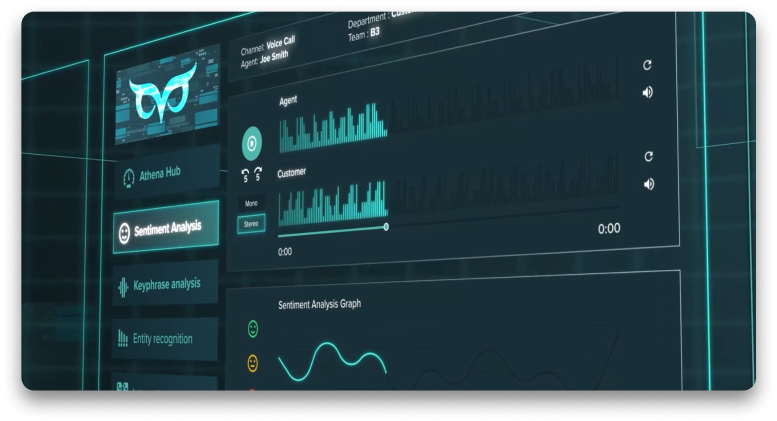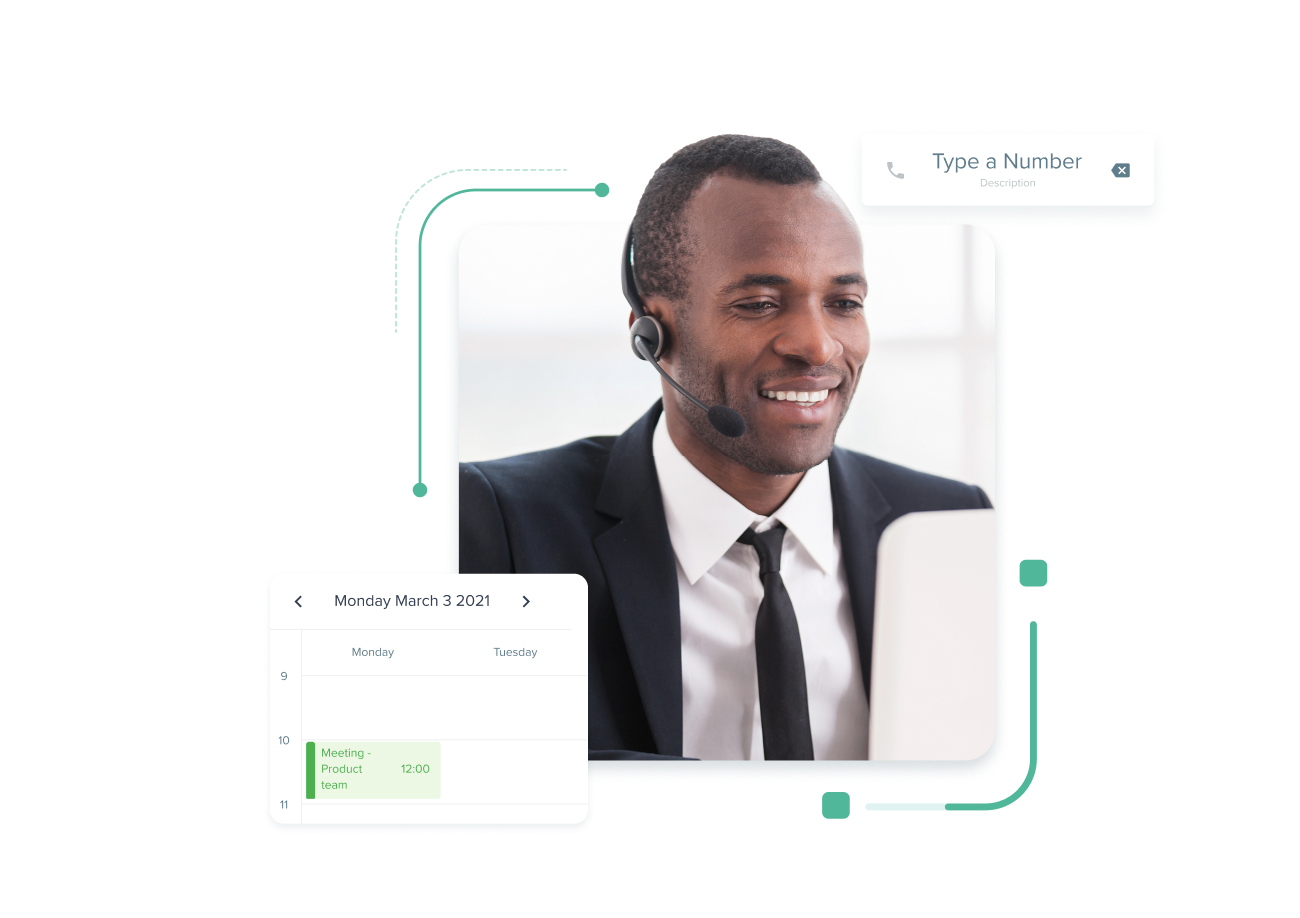Speech Analytics
In the dynamic realm of customer service, where businesses constantly seek innovative tools for effective customer interaction, speech analytics has emerged as a leading technology. Speech analytics represents an advanced AI technology tailored to analyze and interpret spoken words, enriching customer interactions with a deeper understanding. In contrast to conventional text-based analytics, it prioritizes comprehension and interpretation of the intricacies inherent in spoken language.
This AI tool is becoming pivotal for businesses across sectors, enhancing communication with customers. In this article, we’ll delve into speech analytics, covering its definition, functionalities, and profound impact on customer service.
What is Speech Analytics and how does it work?
Speech analytics is an Artificial Intelligence functionality designed to analyze and interpret spoken words, thereby adding a layer of depth to customer interactions. Unlike traditional text-based analytics, which focus solely on written communication, speech analytics delves into the nuances of verbal exchanges. By employing advanced techniques such as natural language processing (NLP), machine learning, and Automatic Speech Recognition, this technology has the capability to transcribe and analyze spoken conversations with precision and accuracy.
This level of analysis provides businesses with valuable insights into customer interactions that may not be captured through text-based analytics alone. For instance, this AI functionality can identify customer sentiment, tone, and emotions expressed during a conversation, offering a more holistic understanding of customer experiences. Additionally, it can detect patterns, trends, and keywords within conversations, enabling businesses to uncover valuable information about customer preferences, pain points, and satisfaction levels.
Furthermore, speech analytics allows businesses to identify areas for improvement in their customer service processes and agent performance. By analyzing interactions in real-time or retrospectively, businesses can pinpoint specific areas where agents may need additional training or support, leading to enhanced customer satisfaction and loyalty.
Overall, speech analytics serves as a powerful tool for businesses across industries to gain deeper insights into customer interactions, improve service delivery, and ultimately drive business growth. Some of the applications for Speech Analytics in business include:
- Call Quality Monitoring: Assess agent tone, script adherence, and regulatory compliance in real-time to ensure consistent service standards.
- Customer Feedback Analysis: Capture customer emotions and preferences expressed during phone conversations to gain valuable insights for service improvement.
- Agent Performance Evaluation: Evaluate communication skills, issue resolution, and policy adherence to identify areas for agent training and improvement.
- Compliance Monitoring: Ensure agents adhere to regulatory guidelines by monitoring language use, information disclosure, and legal protocols during interactions.
- Predictive Analytics for Customer Behavior: Anticipate customer needs and preferences by identifying patterns in spoken interactions, allowing proactive issue resolution and personalized experiences.
- Real-Time Issue Resolution: Identify and address customer concerns promptly during interactions, enhancing satisfaction through proactive problem-solving.
- Market Research and Product Development: Utilize insights from speech analytics to inform market research, identify new product/service opportunities, and stay abreast of industry trends.
Speech analytics involves several essential stages, each dedicated to accurately transcribing and interpreting spoken language:
Audio Transcription
At the outset, the process begins with converting spoken words into written text. Utilizing advanced audio transcription algorithms, this step ensures the accurate conversion of spoken language into text format, laying the groundwork for subsequent analysis.
Speech Recognition
Speech analytics relies on state-of-the-art speech recognition algorithms to precisely identify and transcribe spoken words. This process entails analyzing various acoustic features such as pitch, tone, and rhythm to convert audio signals into coherent text.
Natural Language Processing (NLP)
Following transcription, the text undergoes natural language processing, where algorithms endeavor to grasp the context, sentiment, and intent conveyed by the spoken words. This stage extends beyond mere transcription, providing businesses with a nuanced understanding of customer emotions and preferences.
Similar to sentiment analysis in textual data, speech analytics assesses the emotional tone of spoken words. By analyzing pitch, tone, and linguistic cues, the technology categorizes sentiments as positive, negative, or neutral, offering businesses deeper insights into customer emotions.
Keyword and Phrase Identification
AI identifies crucial phrases and keywords within conversations. This step aids in pinpointing specific topics, issues, or trends that are frequently discussed, enabling businesses to address common concerns or capitalize on emerging opportunities.
Trend and Pattern Recognition
By analyzing a vast volume of spoken interactions, speech analytics identifies trends and patterns in customer behavior and preferences. This information is invaluable for businesses seeking to adapt their strategies and offerings to align with evolving customer expectations and market dynamics.
Advantages of Speech Analytics
Implementing speech analytics within customer service operations yields numerous benefits, fostering organizational growth and elevating customer satisfaction.
Speech analytics offers a holistic view of customer interactions, enabling businesses to pinpoint pain points and areas for improvement. Addressing these issues directly contributes to an overall improvement in the customer experience.
Improved Operational Efficiency
By automating the analysis of spoken conversations, businesses can optimize resource allocation and prioritize issues without the need for manual review of every call. This leads to significant time and cost savings.
Enhanced Agent Training
This technology serves as a valuable tool for agent training and development. By identifying successful communication strategies and areas requiring improvement, businesses can tailor training programs to enhance the skills of their customer service teams.
Proactive Issue Resolution
Real-time issue identification enables businesses to proactively address customer concerns before they escalate. This proactive approach not only enhances customer satisfaction but also upholds a positive brand image.
Compliance and Risk Management
In industries with stringent regulations, speech analytics ensures agent adherence to compliance guidelines, thereby mitigating risks associated with legal issues and regulatory non-compliance.
Data-Driven Decision-Making
This technology furnishes businesses with a wealth of data, enabling informed strategic decision-making. By comprehending customer sentiments, preferences, and behaviors, companies can make data-driven decisions that drive organizational success.
If you enjoyed reading this, you might also be interested in…
Customer Service AI
Conversational AI
Contact Center Artificial Intelligence
AI Based Call Centre



